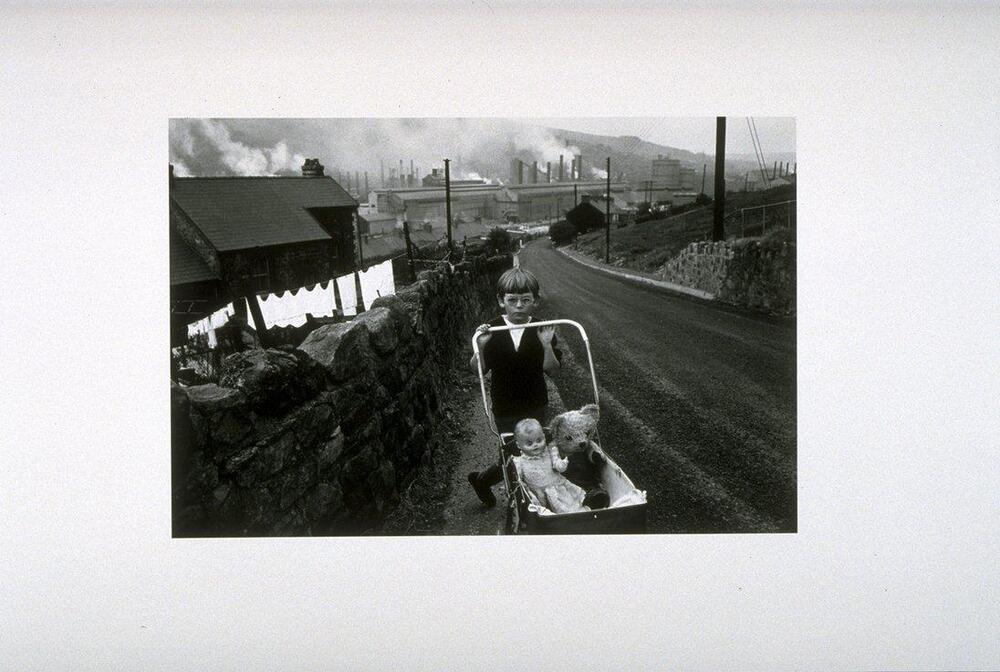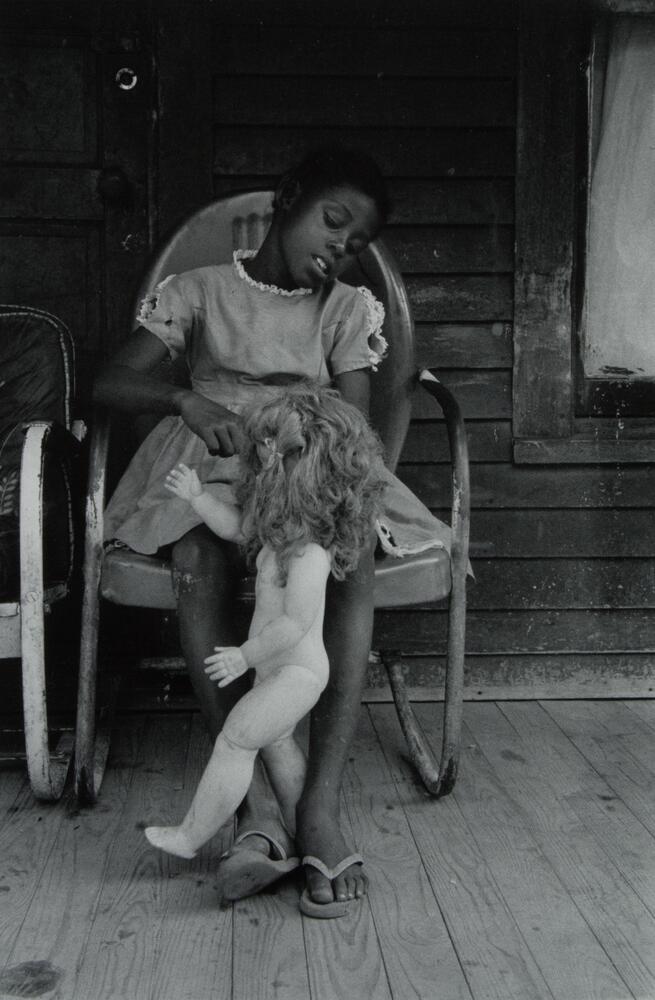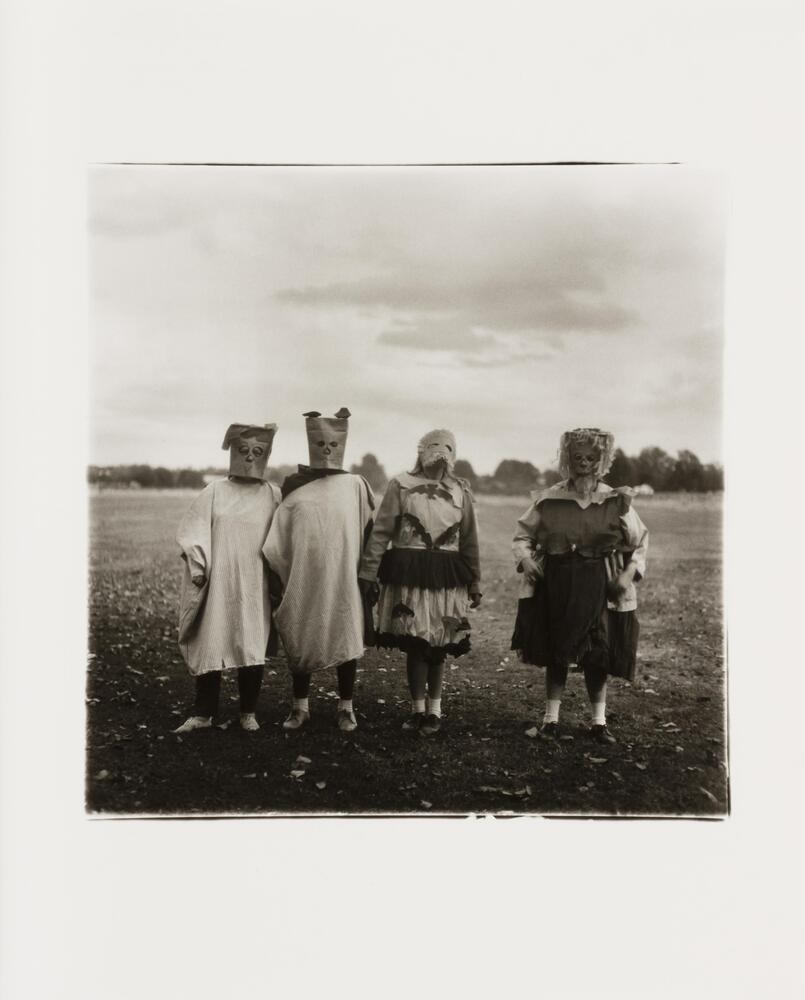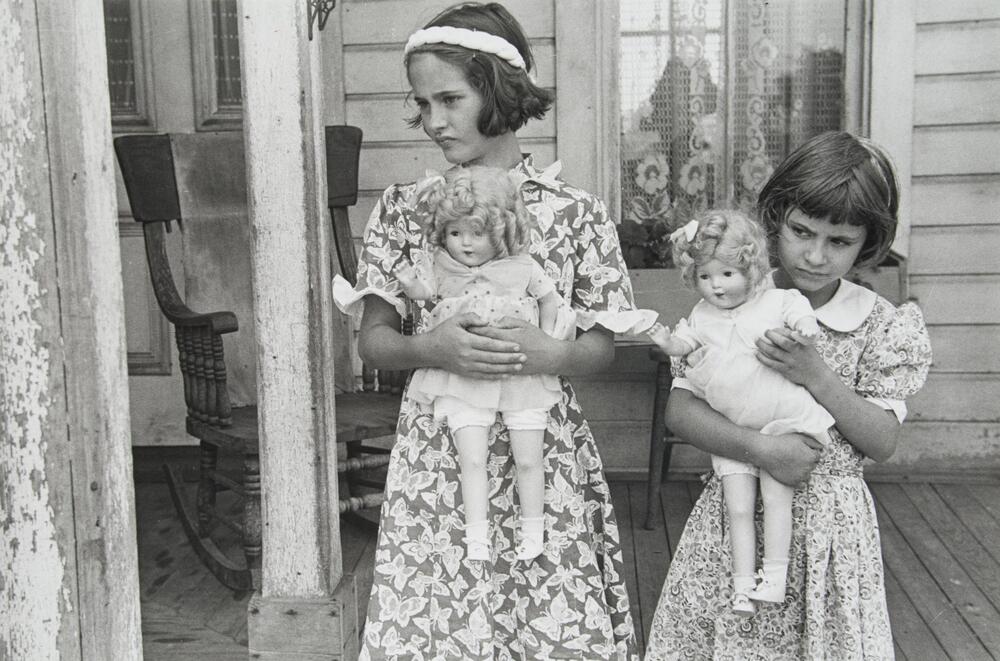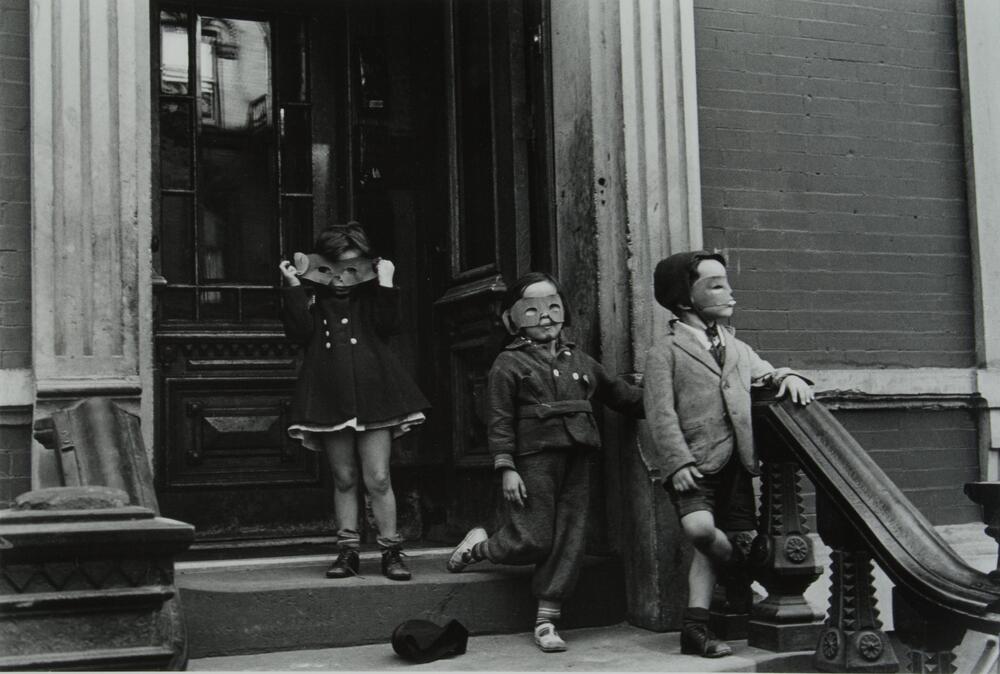At Play: Jewish Photographers Capture Innocence Amongst Hardship
by Leah Altman
Born in 1933 to a Jewish and Polish family in the Chicago suburb of Oak Park, Bruce Davidson began taking photographs when he was 10 years old and went on to be a military photographer and work for Magnum Photos where he would document the civil rights movement from 1961-1965. Influenced by Robert Frank, Eugene Smith, and Henri Cartier-Bresson, Davidson considers himself to be a documentary photographer.
This image comes from a trip to South Wales in 1965 in which Davidson captured photographs of the poverty, struggle, and beauty of a mining town. He spent ten days in the mining communities of the Ebbw Valley in South Wales depicting a region in steep industrial decline.
Here, a young boy is on the side of a road. Behind him are smokestacks, small home structures, and clothing hanging outside to dry. Though the Welsh landscape is shown in decline– Davidson’s photographs show the humanity of the area. Davidson shows moments of play rather than the isolation of the community. He opts to humanize the experience.
In this photo, the boy, who stares directly at the camera with an expressionless face, cocks his leg out to the side and is dressed in plain clothing with a pair of round glasses and a blunt haircut. He holds his hands on a small baby carriage in which he pushes a toy doll and bear. Though the boy knows his photograph is being taken, he looks as though he was caught in the midst of a moment in which he has been walking down the street pushing his carriage of toys. He is the only person visible in the frame which gives his toys an anthropomorphic quality.
Furthermore, the black and white quality of the photograph yields an eerie effect to the scene with the smokestacks producing fog, and the bright white of the clothes drying. The toys guide the eye to the front of the composition which is also emphasized by the road behind the boy which curves from the lower right corner of the composition.
A child and a toy are both thought of as being playful, innocent, youthful, and happy. While the surroundings of the image make it evident that this town is a place of industry and poverty, this child plays. Play acts as an escape from the drudgery of this child’s life.
Taken in Shelby County, Tennessee in 1962, this image was also captured by Bruce Davidson, but earlier in his career than his “Welsh Miners” series. This photograph comes from the period of time in which Davidson documented the civil rights movement throughout America from 1961-1965. Davidson took these photos through a Guggenheim Fellowship, specifically opting to capture scenes of those living under poverty and prejudice. Davidson’s photographs aimed to humanize the poor and demonstrate the urgency that was needed through government action.
Taken in Tennessee, this photograph captures an image of a young girl sitting in a metal chair on a porch playing with a doll. Though the girl wears a dress, the porch that she sits on is run-down, and she wears cheap looking and dirty flip flops. She does not come from a wealthy background. This young girl was born into a world where she was not accepted and could not make a living for herself. She lives in poverty.
The camera shoots the girl from a low angle which puts the viewer at eye-level with the girl. However, she looks down at the doll and does not acknowledge the camera. She is caught in a moment of play. The doll is dirty, naked, and has untamed synthetic hair. The state of this tattered doll reinforces the poverty that the girl is exposed to. The doll doesn’t wear clothes, most likely because it was not found with any, it was likely abandoned by a white family which had originally purchased it. Its abandonment led to its run-down condition in which the young girl found it and took it in.
This girl is from a community that is discriminated against, but the photograph does not focus on this part of her identity– it is focused on her escape, her play. Her doll is second-hand and worn down, it is white and does not look like her, her home is run-down, her clothes are run-down, she faces racism and discrimination, and yet she plays.
Born in 1923, Diane Arbus was born to a wealthy Jewish couple in New York, but Arbus opted to separate herself from her family and lavish childhood. She went to study at the Ethical Culture School and the New School for Social Research where she studied under photographer Lissette Model. Based on Model’s advice, Arbus took photos as an exercise of seeing, not preparing or posing images.
Arbus’s photographs gained notoriety by showcasing taboo subjects. She aimed to express the socially constructed identity– the difference between how a person was seen by society versus how they wanted to be seen. Her subjects included those in the underground social world, and she would establish strong relationships with these subjects often re-photographing them over many years.
Starting in 1969, Arbus began taking a series of photographs of residents of a home for the developmentally and intellectually disabled located in New Jersey. Arbus repeatedly returned to the facility to take photographs. This series of photographs is where this image came from.
Pictured here are four individuals who are developmentally and intellectually disabled dressed in their costumes for Halloween. The four people face Arbus in a straight line with three standing close to each other on the left side of the composition and the fourth standing closer to the right. The background is eerily empty with a field behind the subjects and a horizon line which lays at their shoulder lines.
The costumes that these subjects wear cover up their identities as people who are outcasts of society. People associate those with intellectual disabilities as being childlike, innocent, and naive. Through living in a secluded environment in New Jersey, they are sheltered from the rest of the world, like children.
Arbus photographs the way people want to be seen rather than how they are viewed in actuality. While these subjects may be viewed as unable to care for themselves, less-than, or comparable to children, Arbus shows them having fun on Halloween without these stigmas. This photograph exposes the misconceptions that people may have about those with disabilities. Their identities are masked here and they are able to play freely.
Photographer Ben Shahn was born to a Jewish family in Lithuania in 1898 and immigrated to New York when he was six years old. Though he aspired to be an artist, in 1935 Shahn joined the photographic group at the Resettlement Administration (RA) working to expose American living and working conditions.
This photograph was taken near Mechanicsburg, Ohio in the midst of the Great Depression while Shahn was working for the RA. Shahn shoots the image level with the subjects who seemingly do not know that their image is being taken as they look to the left of the composition. Because Shahn used a right-angle viewer so that people would not know that he was taking their photograph, the girls in the image may be looking at the photographer who seems to be looking at something else.
Shahn’s work documents the decline and vanishing of the small town during the Great Depression. This photograph focuses on children in the midwest who are caught in their natural life, living in tandem with the Depression. Small-town America is no longer an ideal place for white middle-class America, but rather, a place of hardship and struggle regardless of demographic or socio-economic status.
The photo captures two white girls holding dolls. They are dressed in finely-detailed floral dresses and have short blunt haircuts and stand on a wooden front porch. The girls hold their dolls close to their bodies. The dolls are also white and similarly dressed in finely-detailed collared dresses. They too have matching haircuts, and are looking toward the left.
Both the girls and their dolls are finely styled. However, the girls’ family was likely struggling at this time. While the windows on the porch have lace curtains, the post on the left of the composition has chipped paint and the siding of the home is filthy. These girls are caught in the documentation of small-town America facing decline due to the Depression.
Their play gives them an escape from the reality of the struggle of the Great Depression. While they were born into a life of comfort in a small-town to a white family, their world is changing. Remnants of their old life such as their nice clothing and dolls act as a tie to what was once an ideal small-town life.
Born in Brooklyn, New York in 1913, Helen Levitt came from a Jewish family with Russian-Jewish immigrant grandparents. She began taking photographs when she was 18 and became connected to the New York Photo League. Her exposure to the Photo League led Levitt to approach photography in a personal manner.
Levitt began photographing children in 1937 when she became intrigued by their chalk drawings in the streets of New York. New York children’s street culture became a recurring subject for her work. She continued to take photographs in New York City, specifically in East Harlem, the Garment District, and on the Lower East Side– the poorer, working-class neighborhoods of the city.
This image captures children playing on the street in New York on Halloween. There are three children shown who do not realize their photograph is being taken. Levitt captures the photograph on street level looking up at the stoop in which the children stand, allowing the children to appear in power and control the scene. While Levitt photographs lower-class neighborhoods in New York– the children here appear to be well dressed.
The children are in costume and illustrate different stages of getting ready. The child on the far right of the composition looks to the right and wears a Halloween mask as though they are waiting for the other children to be ready to go. The child in the middle is dressed in similar garments wearing a mask for their costume and is caught mid-stride walking down the stairs of the stoop behind the first child. Lastly, the child on the left of the composition is at the top of the stoop. They are wearing a dress and in the midst of putting on their Halloween mask.
Children playing sets this photograph apart from other images of working-class New York. While other photographers capture a journalistic depiction of New York– Levitt shows the world from the perspective of a child. These children represent the idea of the need to put on a figurative mask or costume to enter the harsh reality of New York. Their costumes act as a disguise from the chaos around them– the poverty and harsh conditions of New York. Once again, the act of play and a childlike perspective distracts from the current-events affecting the subjects.
2 Comments
— by Benjamin Alexander Lindy (December 8 2022 @ 12:30 pm)
— by Charles Henry Gertner (December 13 2022 @ 10:05 pm)
0 Tags & 0 Keywords
Tags
Created For
K-12 EducatorK-12 Student
Museum Visitor
UMMA Docent
UMMA Staff
University Faculty
University Student
Rate this Resource
AVG: 0 | Ratings: 0
& Author Notes
All Rights ReservedLast Updated
December 1, 2022 3:01 p.m.Report
Reporting Policy
